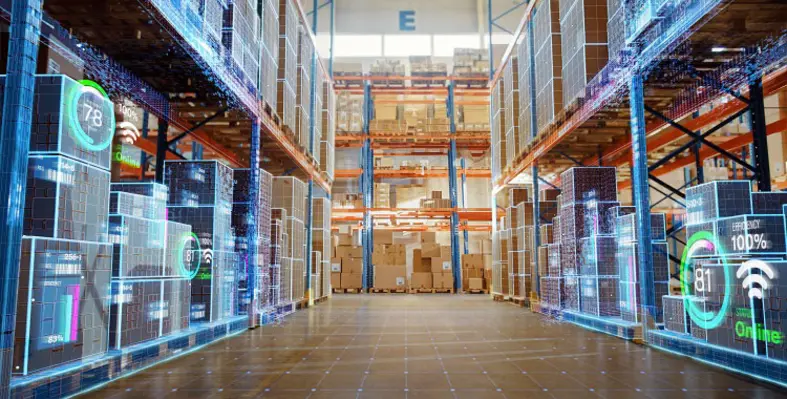Alan Richard, owner of Apex Real Time Solutions, provides an insight into how modern warehouse systems can give businesses an edge in a competitive market and what must be considered before implementation
African Review (ATR): What are some of the most apparent benefits owners can achieve by implementing warehouse management systems (WMS), warehouse control systems (WCS) and warehouse execution systems (WES)?
Alan Richard (AR): A selection of benefits include:
• Competitive advantage: Today, there is competition from both local and international businesses, all promising the customer the best possible product, price, and services. A company must have the tools to support an effective distribution network. Modern WxS solutions allow businesses to optimise and satisfy the e-commerce demands of their customers who are no longer willing to wait for delivery. The customer wants a pleasant experience that is as pain-free and as promised. WxS solutions integrated with the upstream customer relationship system and the downstream delivery services is the only way to stay one step ahead of the market and deliver exactly what the customer expects.
• Efficiency and accuracy: WxS elevate operational efficiency in distribution by automating essential tasks like picking and packing. This automation minimises manual intervention, leading to fewer errors and increased accuracy. The streamlined process ensures that warehouse staff can focus on other essential activities, enhancing the overall productivity of distribution operations.
• Real-time inventory tracking: One of the standout features of WxS in distribution is real-time inventory tracking. This capability allows businesses to monitor their inventory levels continuously, ensuring that they can respond quickly to changes in demand. Real-time tracking prevents stock shortages or overstocking, which might harm operational costs and customer satisfaction.
• Optimising order fulfilment: WxS significantly improve order fulfilment processes in distribution. By providing a comprehensive view of orders, inventory, and shipping schedules, warehouse management software enables more accurate and timely order processing. This optimisation reduces lead times and ensures that customers receive their orders promptly and accurately, which is essential in maintaining a competitive edge in the distribution sector.
• Elevating customer service: WxS enhance the customer experience by offering unparalleled transparency and responsiveness in service. Customers benefit from real-time updates about their orders, from processing in the warehouse to delivery, fostering a sense of trust and reliability. This capability of WxS to keep customers informed and engaged elevates their satisfaction and nurtures long-term loyalty. The focus shifts from mere transactional interactions to building enduring relationships, with WxS serving as a critical facilitator in this customer-centric approach.
• Cost reduction: WxS aid in optimising resource allocation in distribution services. It achieves this by fine-tuning the purchase process, thereby reducing unnecessary spending. The precise management of stock levels leads to a more economical use of warehouse space, avoiding the financial drain associated with mismanaged inventory.
• Compliance and reporting: WxS enhance regulatory compliance in distribution by automating record-keeping and audit trails. This automated documentation is crucial for adhering to ever-evolving industry standards. They facilitate swift, accurate reporting, ensuring that distribution services are always in line with legal and industry-specific requirements.
• Labour optimisation: Using WxS in distribution leads to a more intelligent allocation of human resources. They identify areas where automation can replace manual labour, thereby reallocating the workforce to more strategic tasks. This helps significantly to boost overall efficiency.
• Scalability and growth potential: WxS contribute to the distribution sector’s dynamic growth trend. They provide a flexible design that can adjust to increased operational needs while maintaining service quality and efficiency. This versatility is critical for distribution providers that want to grow their market presence and adapt to changing market conditions.
• Effective returns management: In distribution, a WxS streamlines the handling of returned goods, a critical service component. Efficient returns management through WxS minimises the associated operational disruptions, ensuring that the reverse logistics process is as streamlined and cost-effective as the forward logistics chain.
• Data-driven decision making: For data-driven decision-making, warehouse and distribution services go beyond operational insights. It involves analysing consumer behaviour and market trends to inform strategic decisions. This level of analysis and data helps businesses make informed decisions and enables proactive strategy adjustments.
ATR: Do you think such advantages are widely understood across the continent?
across the continent?
AR: I think the African market lags in both understanding and adoption of technologies to support warehousing and distribution when it comes to the automation of systems such as sorter, GTP, and robotics.
I think there are currently three approaches to operating warehouses.
• Companies that have been doing it the same way for as long as anyone remembers and have never taken the time to see what other companies are doing. These businesses work extremely manually, with, at best, paper-based systems. Knowledge is in the hands of the staff, and over and under-stock issues are a daily problem.
• Companies that understand the need to improve both don’t see the cost-benefit of a tier-one solution. So instead select the cheapest option (at least up-front) that they can. That may be to use the inventory module of their ERP or an entry-level WMS. For some companies, this may be the right option, but for many, they are sacrificing long-term growth and business benefits for short-term capital cost savings.
• Companies that are forward thinking and select a system that will give immediate benefits but that can also deliver for them in the future by allowing them to expand capabilities, add automation, etc. These companies are quite often multi-nationals or at least businesses that have exposure to competition at that level and understand that they need the right tools to deliver and grow in their market.
ATR: How easy is it for companies to implement such systems?
AR: Companies often don’t appreciate how much work they must do for these projects to succeed. In our experience, many companies think they just buy the software, install it, and magically get all of the benefits they foresaw.
The WxS suite of products requires rich sets of master data, for instance, products, suppliers, customers, and location data. Whilst they may have the basic information, they seldom have key data such as units of measure, weights, dimensions, and barcodes that are all vital to the operation of the software. Companies implementing a WxS for the first time do not have that information, and this then becomes a major data-gathering project that has to run in parallel with the implementation of the software.
We as a business try to support our clients in these efforts but it does take their time and staff to complete the work.
Likewise, in the software project itself. The client needs to understand that the project is very hands-on, from the requirements gathering, through pilots, testing, and go-live there are various requirements for the client to have a hands-on project team. Often this falls short as the team allocated is also busy with their day-to-day work and they don’t have the time to devote to the project.
We also like to deliver our software in an iterative approach. Delivering functionally complete components at defined milestones in the project. The idea behind this is to give the client team early sight of the project and allow them to get familiar with the system, use it (in a test environment), and give feedback that can be adopted before go-live. However, again, this has had limited success as we have found that the client team seldom spends time familiarising themselves with the system when we are not directly involved.
I’m not sure if these challenges are unique to the continent. I certainly see some similarities when working on our large overseas Dematic clients. The difference I do see though, is that there is at least an understanding of the scale of the project at the outset and project teams are generally well formed by these clients.
All that being said, your implementation partner should be aware of these typical challenges and put in place processes and structures that mitigate, as far as possible, the problems that can occur with limited client engagement in the project.
ATR: Cost is seen as a difficult barrier to overcome, but why should companies put their faith in long-term gains through short-term investment?
AR: Cost is definitely an issue, and, in my experience, many suppliers don’t explain the true cost of an implementation. The costs are not limited to the purchase and setup of the software. There are many other elements, servers (if in-premise), label and document printers, PCs for workstations, Wi-Fi for the mobile devices, the mobile devices themselves, durable labels for the locations, consumables for printers, to name a few of the additional costs that need to be factored into the overall project costs.
However, if these are taken into consideration and a true total cost of ownership over, for instance, five years, is calculated then it will be possible to understand what the ROI is based on the anticipated cost savings and revenue generation that can come from an effective distribution system.
For companies that don’t have access to the capital for these projects, there are now affordable financial options either direct from suppliers, such as us or from the main banks and other lenders that can allow a company to spread the cost over an extended period so as not to put a strain on their cash flow. In this way, you can start to get the payback quickly as your monthly cost savings and additional revenue can pay for the month's financial costs.
ATR: How does the implementation of such systems affect employees within facilities?
AR: Undoubtedly implementations of new technologies have an impact on staff. There is an instinct to fear these projects as the expectations are that the project will lead to job losses, or the individuals might fear that they won’t be able to understand the new technology. In reality, in most cases, we see that the net effect of the project is to get more done with the same number of people. Only in situations where a facility is grossly overstaffed or going completely dark will retrenchments be likely to occur.
Change management is a largely neglected role but can pay dividends in managing the expectations and fears of the team. Explaining to them at each stage of the journey what is happening and what it means to them personally will prevent morale issues and rumours. Gamifying the journey and using notice boards to map progress and encouraging the team to take part and ask questions will all help to achieve a smooth transition and buy-in to the project.






